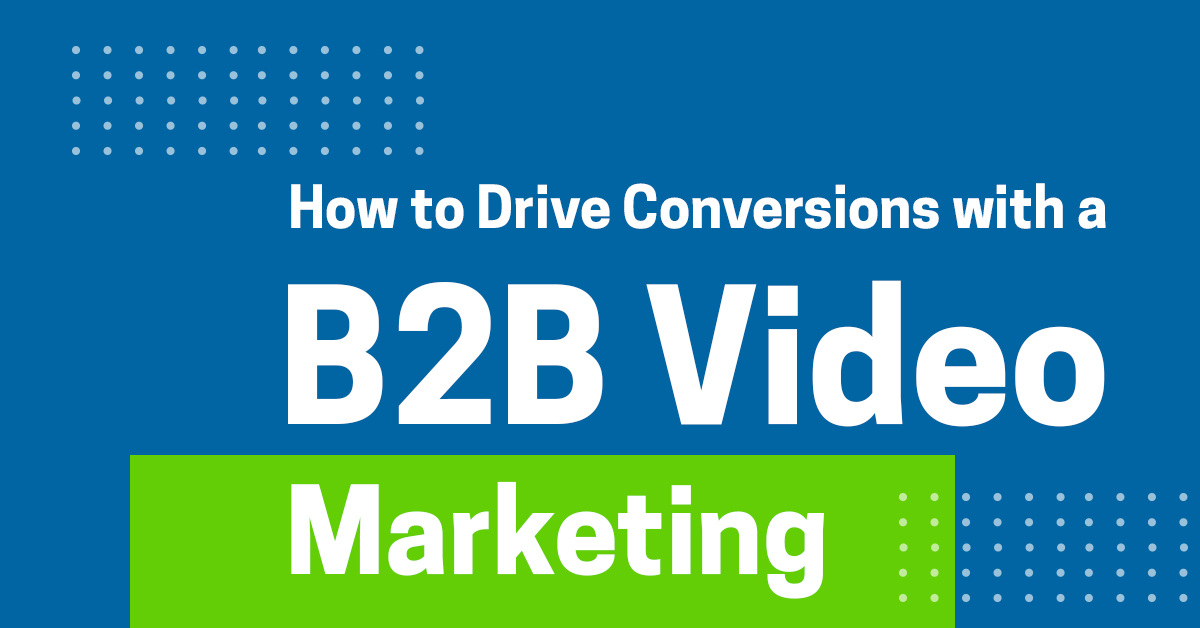There’s no secret that video marketing is king.
But despite its popularity and effectiveness, some people still get video marketing wrong. And instead of increasing sales and revenue through video content, money slips through the cracks.
How can you prevent that from happening?
A conversion-oriented B2B video marketing funnel is the only way to eliminate guesswork from your marketing strategy and actually get positive outcomes from your campaigns.
Confused?
Don’t worry about it! In this article we’ll tell you all about:
- What a video marketing funnel is
- Two funnel models you can use to mark each touchpoint in your customer journey
- Video types you can use for each customer touchpoint in the ToFu/MoFu/BoFu model
We have a lot to talk about, so let’s get right into it!
What Is a Video Marketing Funnel?
A video marketing funnel is a representation of a customer’s interaction with a brand through video marketing—from being aware of the existence of a brand to becoming a brand ambassador.
In other words, a video marketing funnel is a comprehensive marketing strategy that touches each step of the buyer’s journey with corresponding video content, and is an important part of every inbound lead generation strategy.
The AIDA marketing model
The AIDA model is a marketing concept pictured as being similar to a funnel that defines the stages consumers move through before making a purchase decision.

Image Source: Wikipedia
In fact, it’s all in the name—AIDA stands for:
- Attention/Awareness: Marks the moment when a consumer first learns about a brand or product (i.e. a consumer comes into contact with a video ad on YouTube).
- Interest: The consumer is learning about the features, benefits, values, etc. of a product or brand; the consumer becomes interested in a brand’s offering.
- Desire: The consumer realizes that the brand’s offering aligns with their needs, developing a desire for the brand’s products or services.
- Action: The moment when products move from the wishlist to the shopping cart. At this stage, the desire transforms into a purchase and the consumer into a customer.
The ToFu/MoFu/BoFu marketing model
Another (slightly more simplified) approach to the same concept is the ToFu/MoFu/BoFu marketing model which reduces the customer journey to three phases or stages, as follows:
- ToFu (top-of-funnel): the awareness stage
- MoFu (middle-of-funnel): the consideration phase when consumers take interest in a brand’s products or services
- BoFu (bottom-of-funnel): the conversion stage, when consumers make a purchase
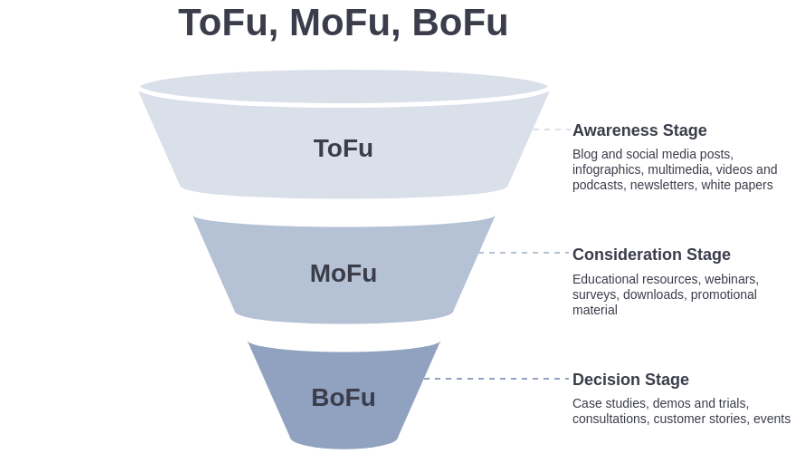
Image Source: Visual Paradigm Online
Now let’s see how you can increase conversions by adapting your B2B video marketing strategy to the ToFu/MoFu/BoFu model.
Top-of-the-Funnel (ToFu) & Awareness Phase: 3 Best Video Types
The top of the funnel is where the meet and greet happens.
Namely, in the ToFu stage you are raising awareness about and simply introducing your brand to your target audience.You can successfully make your brand known with introductory videos, storytelling videos, and webinars.
Introductory videos
Introductory videos are perfect for giving your audience a glimpse of what your brand is all about.
Take Backlinko’s video as an example. It’s simple, straightforward, and relatable. The video tells the consumer what Backlinko does and how their product can help solve a common problem among entrepreneurs: getting SEO right.
Storytelling videos
Videos that tell a story help your audience get to know your brand and see your human side. Such videos allow people to connect with brands on a deeper level, thus increasing customer loyalty and retention.
The video that Alex Strohl made tells an authentic story of a personal brand with great views and captivating imagery and a speech that feels natural and not brainstormed by a team of marketers. This appeals to people.
Webinars
Webinars and live streaming are fantastic ways to raise awareness of your brand, products, and services. Webinars help you provide viewers with valuable information while making them feel familiar with your brand.
Webinars can also take the form of live workshops, like in Canva’s case. This example gives viewers valuable information that doesn’t have an obvious salesy motivation behind it.
So, when making videos for the ToFu stage, please keep in mind that the goal is not sales. At this stage, you begin a relationship with your audience and tell them what your brand stands for, what your product is and what benefits it has, and more.
Middle-of-the-Funnel (MoFu), Interest & Desire Phase: 2 Best Video Types
After consumers get acquainted with what you offer, it’s time to advance down the middle of the funnel, into the MoFu stage.
The MoFu stage is the time to jump into informational and educational video content that will provide viewers with valuable content while helping you generate interest in your products and services.
Explainer & How-to videos
This is self-explanatory!
How-to videos are the best when it comes to engaging with the viewer and showing them that you’ve got a solution to their problem.
For instance, this value-packed YouTube video by SevenAtoms teaches viewers about email marketing in a very straightforward way that captivates the audience’s attention.
While they could have made the video unnecessarily long by going over related topics such as email marketing tools, they remained focused on their message, and their viewers remained engaged.
Customer testimonials
Customer testimonials are great when it comes to giving proof to customers who are already familiar with your product and are thinking about whether they should invest in your service or go for a competitor’s.
Plus, testimonials make it easier for people to trust a brand and ultimately move towards the bottom of the funnel!
Take a look at this testimonial video as an example.
Yum Yum’s video leverages the positive experience of a customer to build trust and inform the prospective customers watching the video that other B2B customers saw positive results with this service.
So, in the middle of the funnel, you want to create videos that showcase how your product or service has helped your customers address their pain points. You need to highlight the operational efficiencies your customers have managed to drive as a result of your collaboration. When doing so, your prospects will slide to the bottom of the funnel in no time.
Let’s see what happens in the BoFu stage.
Bottom-of-the-Funnel (BoFu) & Action Phase: 4 Best Video Types
We are talking about people who have made it to the bottom of your marketing funnel, which means that it’s time to take action.
Some great things you can do in terms of video marketing are:
- Product demos
- Tutorials
- FAQs
Onboarding videos, for example, will make it easier for customers to convert and start using your products/services.
Product demos
Product demos are a great way to show your customers how to use your product in an engaging way. Moreover, you can also use product demos for newly launched products so that you reintroduce existing customers into the sales pipeline.
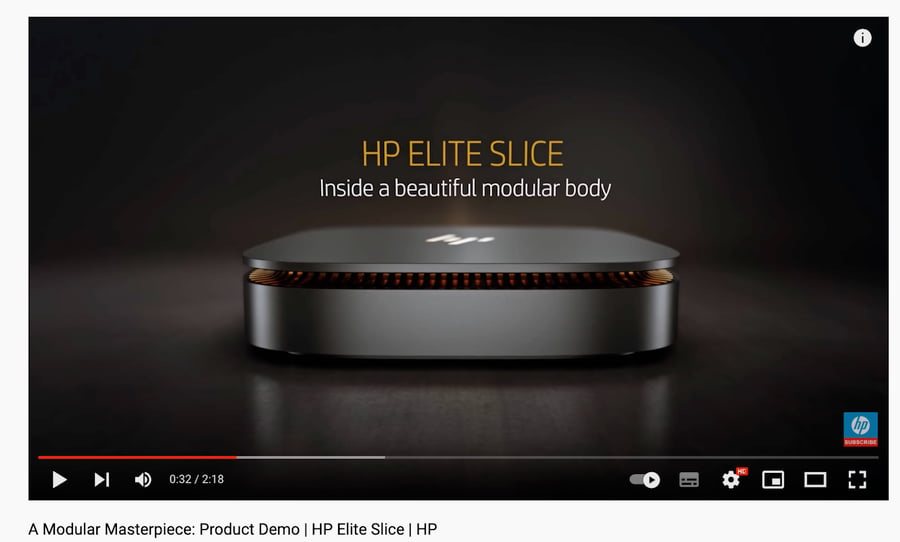
Image Source: YouTube
This HP product demo helps customers understand the product better and use it at its full potential.Plus, detailed product demos like this could spare you from a lot of customer support calls as well!
FAQ videos
FAQ videos are another method to improve CX (customer experience) while also reducing the time your customer support team needs for answering a lot of simple questions.
Plus, FAQs can offer you a boost in organic performance.
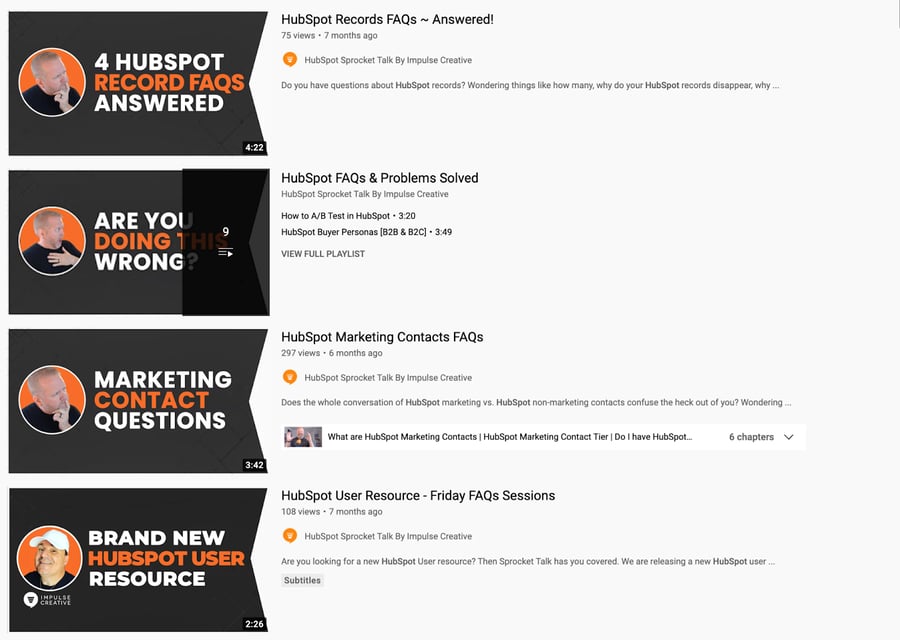
Image Source: YouTube
Have a look at HubSpot’s approach to FAQ videos. The company does a great job at explaining marketing concepts and strategies while also providing practical tutorials on how HubSpot can help businesses put the theory into practice.
Video tutorials
Similar to how-to videos, video tutorials help customers succeed in using a product with minimal friction.
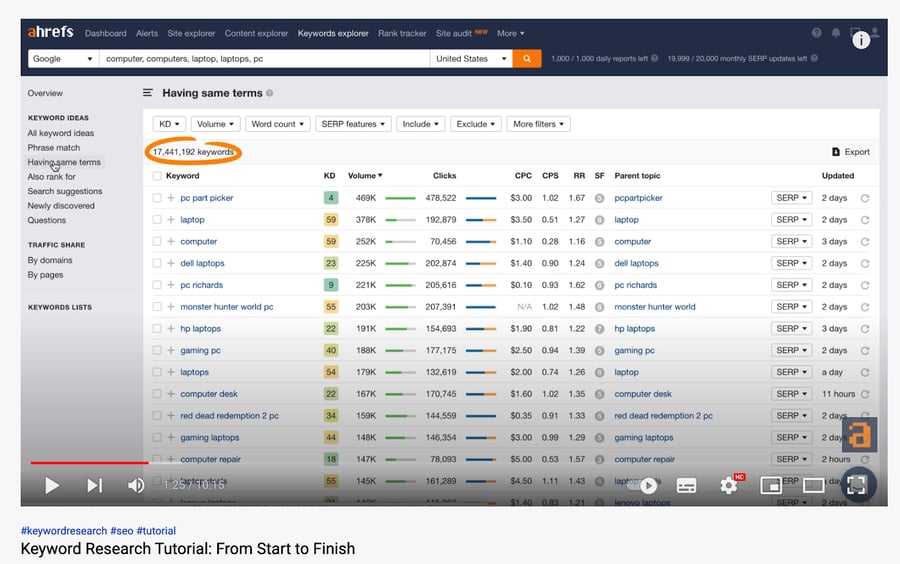
Image Source: YouTube
Watch Ahrefs’ video tutorial on how to research keywords like a pro using the Ahrefs platform to get an idea of what to include in your tutorial videos.
Onboarding videos
Onboarding videos give you the ability to give a warm welcome to your new customers while offering an informational starter pack your customers need to get started with your product or service.
In this case, you can choose to host your onboarding videos on your own website or post them on video hosting platforms (such as YouTube, Unscreen, etc.).
STATION F did a great job at making their onboarding video super entertaining and engaging with witty humorous moments, while also making sure to touch on the most important aspects of their services.
We would say their customers have a great first day on the startup campus, wouldn’t you agree?
To sum it all up, the bottom of the funnel is all about equipping your new customers with the knowledge they need to successfully use and interact with your products and services.
The BoFu stage is the perfect time to offer your customers the means they need to leverage your product’s full potential to their advantage.
Conclusion
Building a video marketing strategy following the ToFu/MoFu/BoFu model is a great starting point to better understand the different stages of the buyer journey.
Plus, when creating the right video content for the right funnel stage, you will increase your conversion rate effortlessly—the videos will do the job for you.



